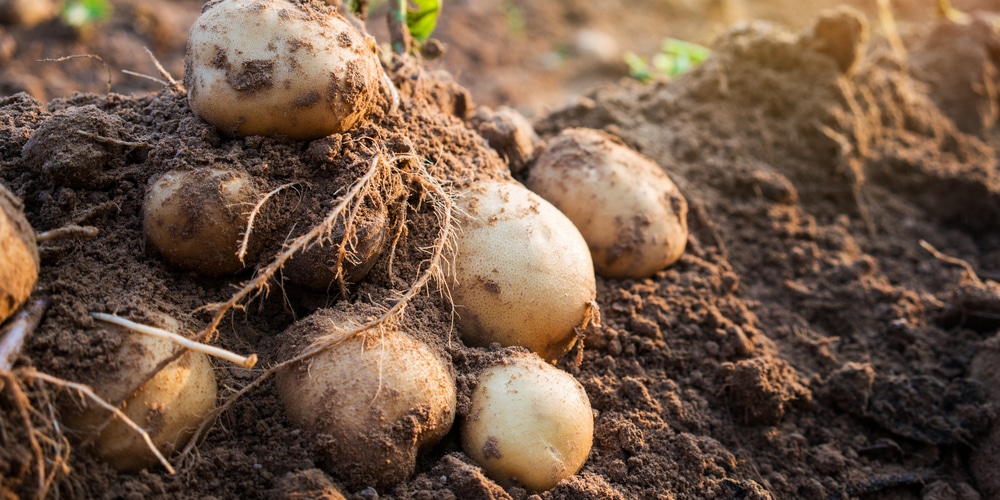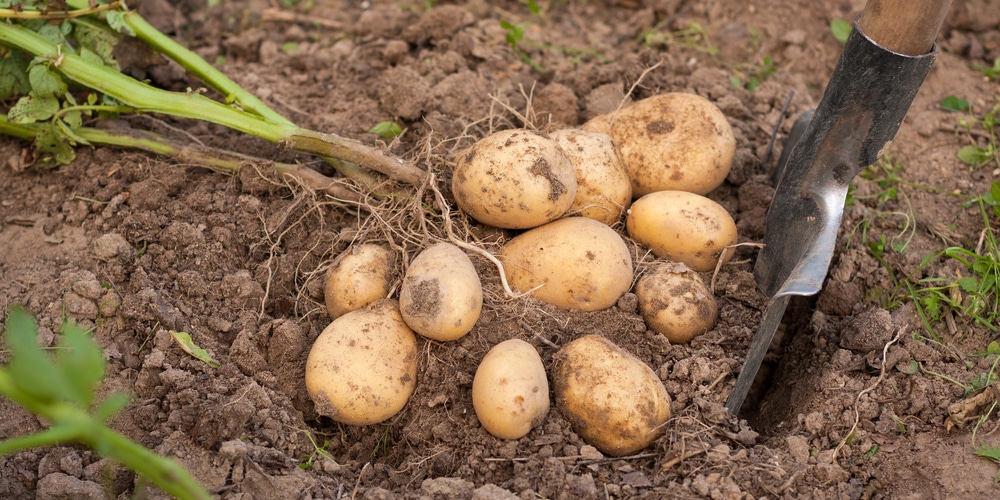Potatoes might not be the “trendy” crops tomatoes are. However, they can give you plenty of satisfaction. But despite not being particularly challenging to grow, these tubers have precise requirements. For instance, you should know what kind of soil potatoes like to get plenty of harvests at the end of the season.
If this sounds like something helpful, keep reading. Indeed, we included everything you must know about growing tomatoes in this essential guide!
What Substrate Should You Prepare For Your Potatoes?
Let’s go straight to the core of the question. The truth is that potatoes need well-draining and loose soils to thrive. So, if you have a sandy or loamy substrate, you won’t have to worry about much else. Avoid clay soils: they are too compact and retain too much moisture. Such conditions will make it challenging for your tubers to grow.
But if you have clay soil in your garden, don’t despair! You can amend it and make it suitable for growing potatoes by adding gravel or perlite to the mixture.
Aeration can also reduce compaction and increase drainage. While sand might also work, too much of it will result in cement-like soil, which will be impossible to work with, let alone grow tubers!
Also, before applying sand to your yard, wash it to remove the naturally occurring salt. And if you want to save yourself all those headaches, improve your substrate’s consistency using other methods.
Of course, high-quality soil that contains adequate nutrition will give you healthier and more resilient plants with higher resistance to diseases, infections, and pests. We recommend you do a soil test before adding any extra nutrition or changing the current conditions in your yard.
Consider removing debris such as rocks, soil clumps, and other plants’ roots using a sifter to improve your substrate conditions and make it suitable for growing potatoes. Impediments might make it more challenging for your tubers to reach the nutrition necessary for their growth.
What’s the Ideal Soil For Potatoes?
It might be worth mentioning that the ideal pH for delicious potatoes is between 6.0 and 6.5. Also, consider adding a layer of compost or manure to increase the soil nutrient content and provide your plants with all the essential elements for their growth.
Also, adding compost will improve drainage, which might is especially handy if you have a clay substrate. Organic materials are more desirable than synthetic ones and tend to come with fewer side effects. So, whenever possible, pick those over chemical fertilizers.
Of course, we understand that fertilizer might be necessary for some circumstances. And a soil test might help you identify which product you must choose for your yard.
However, you can’t go wrong using slow-release and balanced fertilizers that will add a portion of nitrogen, phosphorous, and potassium to support your crops’ growth.
Consider mulching around your plants using organic substances such as straw or bark to increase water retention and improve drainage. Doing so will also protect your tubers from excessive sun exposure, which will ruin them.
How to Plant Potatoes
We recommend you prepare the soil for your potatoes a couple of weeks before planting your seeds. Doing so will allow any amendment you may have added to improve the soil conditions effectively.
Before getting into how you plant potatoes to get the best harvests, let’s clarify that you must choose a sunny location for your tubers. Indeed, to thrive, potatoes need at least 6 hours of direct sunlight.
Also, the best time of the year to sow your potato seeds is about two weeks after the last frost in the spring. And the exact date will depend on your USDA hardiness zone and local climate conditions.
You can grow potatoes in the ground or inside containers. Either way, the procedure to sow the seeds is the same. Work the soil to a depth of about 6 to 8 inches and allow a space of 12 inches between each seed. Then, cover everything with 3 or 4 inches of the substrate you are using.
Keep the mixture moist: you’ll probably see germination occurring in 12 to 16 days after planting. At that point, you can fill the “trench” with another 3 to 4 inches of soil. To allow for healthy growth, always leave a couple of inches of the seedlings exposed.
To encourage the development of strong roots, deeply water your plants instead of applying shallow moisture too frequently.


